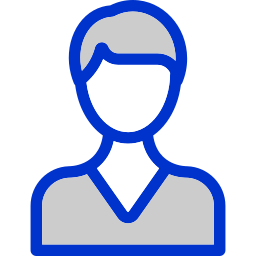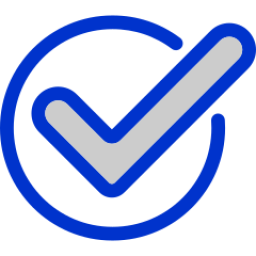Neck Pain
More than 10% of Americans suffer from neck pain at any given time.
Neck pain affects a significant number of individuals. The reason is that the neck region contains many delicate, pain sensitive structures commonly exposed to abuse and abnormal stresses. Incomplete rehabilitation of past injuries, poor posture, prolonged sitting, and lack of periodic spinal alignments are some of the more common factors in the development of neck problems.
Fortunately, most individuals suffering from neck problems will find chiropractic care extremely beneficial. Unlike prescription drugs, most chiropractic procedures address the cause of the majority of neck problems, not simply the symptoms. Best of all, chiropractic care is safe, natural, and noninvasive... no side effects allowed!

Anatomy of the Neck
Within the neck lies the cervical spine, the upper most portion of the spinal column. The cervical spine is structurally and functionally unique from the other areas of the spinal column. Structurally, the cervical spine is composed of 7 moderately small and unique vertebrae including associated muscles, ligaments, joints and nerves. The cervical spine has many important functions which include providing support and mobility to the head and neck, providing essential information for the balance and coordination of the body, and protection for the upper spinal cord and associated spinal nerves.
The cervical spine is the most flexible region of the spine, providing the most generous amounts of flexion, extension, lateral flexion and rotation.
The 1st and 2nd cervical vertebrae, known as the atlas and axis respectively, have highly unique structures which allow them to form a pivot joint. This joint alone provides approximately 90 degrees of rotation in the cervical spine. These same vertebrae also contain special receptors within their joints which provide the brain with important information essential for the maintenance of balance and coordination. As you will see in “Causes”, injury or irritation to these mechanoreceptors results in balance disturbances and problems with coordination.
The remaining cervical vertebrae also provide large degrees of motion but mainly in flexion, extension and lateral flexion (side bending). Unfortunately, there’s an inverse relationship between mobility and stability. Thus, the cervical spine is more susceptible to injury compared with other areas of the spine.
The cervical vertebrae immediately encase and protect the spinal cord as it descends from the skull.
The spinal cord travels through small holes in the rear of the cervical vertebrae, giving rise to spinal nerve roots at each vertebral level. These nerve roots exit through the small openings formed by adjacent vertebrae called the intervertebral foramina (IVF). The IVF is the “exit” out of the cervical spine as spinal nerves make their way to the head, face and arms. The IVF is a common location for nerve irritation and can give rise to a variety of head, neck and upper extremity symptoms in the cervical spine.
The nerves exiting the cervical spine are delicate and can become irritated or injured, giving rise to a number of different signs and symptoms.
The 1st through 3rd cervical nerves exiting from the cervical are responsible for providing sensations to the head and face. When these nerves are compressed, stretched or irritated they will cause pain and other altered sensations in regions of the head and face. Researchers have found irritation to the 2nd cervical nerve (the greater occipital nerve) to be a major source of head and face pain. The nerves from the mid and lower cervical spine combine to form the brachial plexus, a collection of nerves which innervate the arms. Compression, stretch or irritation to these nerves commonly cause pain, numbness, tingling and weakness in the arms.

Causes of Neck Pain
There are many causes for neck pain. Some causes result from acute injuries which cannot be avoided, such as an automobile accident resulting in a whiplash-type injury. Other causes can be avoided and result from the use of "bad" or improper habits and techniques, such as poor posture and improper lifting. These "other causes" make up the majority of neck pain causes and can be effectively treated once the cause(s) is/are identified and the appropriate measures to avoid these "bad" and improper habits and techniques are implemented.
Some of the more common causes of neck pain include:
- Incomplete rehabilitation of past injuries
- Lack of proper and periodic spinal alignments
- Presence of cervical spine subluxations
- Whiplash-type injuries
- Improper workstation setup
- Poor posture
- Prolonged sitting
- Prolonged use of non-ergonomically designed equipment
- Excessive repetitive neck motions
- Improper telephone techniques
- Excessive mental stress
- Physical inactivity
- Poor diet and nutritional practices

Treating Neck Pain
Doctors of chiropractic have long known that the most successful treatments involve the identification and correction of the underlying causes of the condition. That's why chiropractic care has been so successful in the correction of back and neck conditions and the number one choice for back and neck care.
Identifying the Cause
The first step in treating neck pain is to determine what has and is causing the neck pain. Once the causes and contributing factors are identified, a successful treatment plan can be structured to eliminate pain and achieve the goals of the patient.
The Treatment
The chiropractic treatments for neck pain incorporate the use of many therapies, all of which are gentle, safe, natural and noninvasive. However, the true power of chiropractic care is found in the chiropractic adjustment - the most effective and essential treatment employed by the chiropractor. The reason? Quite simply, the spinal adjustment corrects the major problems that the majority of neck pain sufferers have.
Most individuals experiencing neck pain have either:
- Suffered an acute accident such as whiplash, where the structural integrity of the neck has been altered and tissue damage has occurred
- Been exposed to long period of adverse neck and spinal stresses most commonly from bad or improper postural habits and techniques
In both cases, the spinal components are almost always structurally misaligned and biomechanically faulty. In other words, the vertebrae and their supporting structures have lost their "optimal" positioning and their movements are occurring in an inappropriate and stressful manner. The only effective and long-term way to correct the structural malpositions and improper biomechanics is to realign the spinal segments and restore normalize motion. This is the job of the spinal adjustment. In addition to restoring positioning and motion, the spinal adjustment also produces a reflexive relief of pain and reduction in muscle spasm. This is due to the high number of mechanoreceptors in the joints of the vertebrae which are stimulated through the chiropractic adjustment. Research has shown that stimulation of these mechanoreceptors sends signals to the brain which shutdown pain signals and result in muscle relaxation. Also, the adjustment helps to eliminate inflammation through the introduction of motion; inflammatory chemicals are known irritates to pain fibers.
Proper Habits and Techniques
Another key ingredient to a successful neck pain treatment plan includes the learning of proper postural habits and other techniques. Proper posture is a significant factor in the health of the neck and back and proper posture should always be practiced. Techniques common to daily living and work also play a major role in the development or lack of development of neck pain. This includes proper lifting techniques, telephone techniques, avoidance of repetitive motions, and much more. We can teach you correct habits and techniques which will protect your neck and back from discomfort and injury. Also, be sure to checkout our "Posture" and "Ergonomics" sections of our site for additional information.
Other Therapies
Other manual therapies such as massage, trigger point therapy, proprioceptive neuromuscular facilitation, and acupressure therapy may be utilized to assist in the relaxation of cervical muscles and increase cervical spine mobility. Therapeutic exercises and stretches which assist in the restoration of proper cervical motion and increase cervical muscle strength and coordination are commonly prescribed. Exercises and stretches are unique in that they can be performed outside the office without the assistance of the doctor. Physical therapies commonly used by physical therapies may also be employed and include hot and cold applications, muscle stimulation, interferential therapy, therapeutic ultrasound, and diathermy. Diet and nutrition also play a key role in the health of the cervical spine. Without the proper nutrients, the cervical spine and rest of the body are less able to remain healthy and heal once injured. If your diet and nutritional status is poor, we can help get you on track.
Healthy Living Tips for Neck and Upper Back Pain:
- Regular Spinal Checkups - Practicing proper posture, lifting techniques and ergonomics are key in reducing neck and back injuries at work and play and minimizing future recurrences of past injuries. For more info, checkout the "Ergonomics" and "Posture" sections of our site.
- Practice Proper Posture, Lifting, and Ergonomics - Practicing proper posture, lifting techniques and ergonomics are key in reducing neck and back injuries at work and play and minimizing future recurrences of past injuries. For more info, checkout the "Ergonomics" and "Posture" sections of our site.
- Regular Exercise - Routine physical activity keeps the heart healthy and keeps the spine as well as the rest of the body strong and healthy. An effective exercise program should consist of a minimum of 3 sessions per week for 40 minutes. Involve friends and family, mix up the activities, keep it fun and stay consistent!
- Proper Diet and Nutrition - Providing your body with the proper fuel increases performance, reduces the likelihood of injury and sickness, speeds recovery after injury, and keeps you feeling good. If, like the rest of us, you're finding it difficult to get all the nutrients your body needs, it's probably time to supplement. For information on nutritional supplements, checkout the " Health Products " section of our site.
- Utilize Stress Management Techniques - Stress is most often carried in the shoulders, upper back and yes, neck. While stress can't be totally eliminated there are effective techniques to help bring it under control. Checkout the "Wellness Center" for more information on stress management or contact our office for an appointment.

Research
- Baker B. Family Practice News 1996; June 1:14.
- H. Brodin, Manuelle Medizin 1982; 20:90-94. From the Institution of Physical Medicine, Karolinska, Sjukhuset, Sweden.
- Journal of the Royal College of General Practitioners 1983; 33:574-579.
- Journal of Manipulative and Physiological Therapeutics 1990; 13:13-16. From the Canadian Memorial Chiropractic College, Toronto, Ontario, Canada.
- Journal of Manipulative and Physiological Therapeutics 1992; 15:570-575. From the Department of Orthopedic Surgery, Royal University Hospital, Saskatoon, Saskatchewan, Canada.
- British Medical Journal 1986; 292:656-657. From the Department of Orthopedics, St. James's Hospital, Dublin 8, Ireland.
- Journal of Manipulative and Physiological Therapeutics 1993; 16:211-219. From the Institute for Research in Extra mural Medicine, Free University, Amsterdam, the Netherlands.

